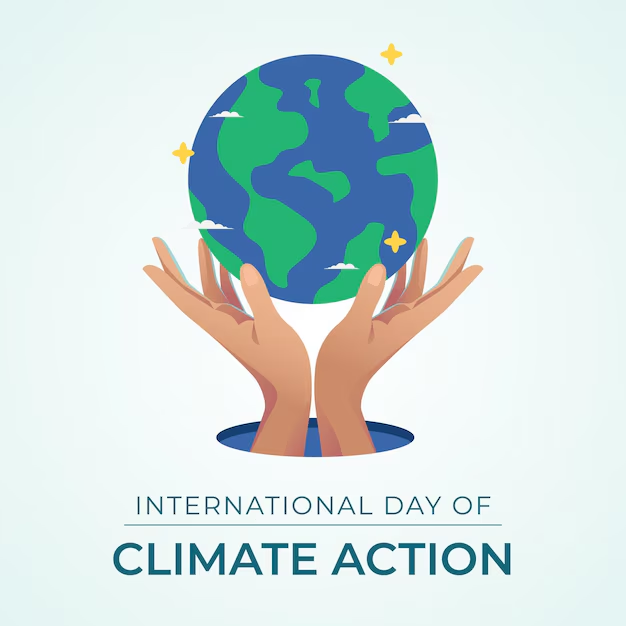What is the International Day of Climate Action?
The International Day of Climate Action, observed annually on October 24, is a global initiative dedicated to raising awareness about the urgent need to combat climate change and mobilizing people worldwide to take meaningful steps toward a sustainable future. It serves as a powerful reminder that individual and collective actions can drive systemic change, emphasizing the shared responsibility to protect our planet from the escalating impacts of global warming, such as extreme weather, biodiversity loss, and rising sea levels. This day highlights how everyday choices— from reducing carbon emissions to advocating for policy reforms—contribute to preserving biodiversity and building resilience against environmental threats.
History and Origin
The International Day of Climate Action traces its roots to the global climate movement spearheaded by 350.org, an international grassroots organization founded in 2008 by author Bill McKibben and a group of university friends. The organization was named after the “safe” atmospheric concentration of carbon dioxide (350 parts per million), a threshold scientists warned we must not exceed to avoid catastrophic climate impacts.
The first International Day of Climate Action took place on October 24, 2009, organized by 350.org as part of a worldwide mobilization ahead of the UN Climate Change Conference (COP15) in Copenhagen. This inaugural event featured over 5,200 actions in 181 countries, including marches, rallies, tree plantings, and art installations, marking it as the largest coordinated day of climate activism in history at the time. Earlier precursors existed, such as the Global Day of Climate Action in December 2005 during COP11 in Montreal, but the October 24 observance became the flagship annual event, evolving from protest formats initiated by environmentalists in 2005.
Since 2009, the day has grown exponentially, with millions participating each year. By 2024, it marked its 15th anniversary (in 2025, the 16th), inspiring events from local cleanups to global summits and aligning with broader UN efforts like the Paris Agreement and Sustainable Development Goal 13 (Climate Action). Though not formally designated by the UN General Assembly, it has been embraced by the United Nations as a key platform for civil society engagement in climate advocacy.
Significance
In an era where climate change poses existential threats—exacerbating poverty, displacing communities, and threatening food security—the International Day of Climate Action holds profound importance. It fosters global solidarity, demonstrating that solutions to the climate crisis transcend borders, politics, and economies. By amplifying voices from vulnerable nations and indigenous communities, the day underscores equity in climate justice, ensuring that those least responsible for emissions are not the most affected.
The observance pressures governments and corporations to accelerate transitions to renewable energy, enforce emission reductions, and invest in resilient infrastructure. It also empowers individuals, showing that small actions—like reducing waste or supporting green policies—scale up to influence international agreements. Ultimately, it reinforces the message that urgent, unified action today can limit warming to 1.5°C, as outlined in the Paris Agreement, safeguarding a livable planet for future generations.
Key Pillars
The International Day of Climate Action is built on four core pillars that guide its activities and long-term impact:
| Pillar | Description |
|---|---|
| Awareness and Education | Informing communities about the science of climate change, its human causes (e.g., fossil fuel dependency), and effects like ocean acidification. Events often include workshops, documentaries, and social media campaigns to debunk myths and build knowledge. |
| Mobilizing Collective Action | Encouraging grassroots participation through rallies, cleanups, and pledges. This pillar emphasizes “bottom-up” change, where citizens drive top-down reforms, as seen in the 2009 global events. |
| Policy Advocacy and Accountability | Pushing for stronger laws, such as carbon pricing and renewable targets. Participants lobby leaders and track progress on UN goals, holding polluters accountable. |
| Promoting Sustainable Practices | Highlighting scalable solutions like reforestation, sustainable agriculture, and clean energy adoption. Annual themes often focus on specifics, such as protecting forests or accelerating renewables in 2024–2025. |
These pillars ensure the day is not just symbolic but a catalyst for ongoing, transformative efforts.
How to Get Involved on October 24, 2025
- Join or Host an Event: Organize a local march, workshop, or virtual webinar via platforms like 350.org.
- Share Your Voice: Post climate facts, personal pledges, or photos of green actions on social media with #ClimateAction.
- Adopt Daily Habits: Commit to reducing your carbon footprint—e.g., using public transport or planting trees.
- Advocate: Contact policymakers to support climate legislation.
By participating, you contribute to a movement that has already influenced global policies and inspired millions.
(India CSR)







